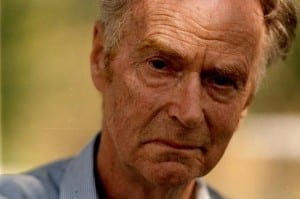 When we first met, I had no idea that this man in oatmeal tweeds and with sparse fair grey hair was a spy. He owned a semi-ruined property near Cortona in Tuscany. Someone had tipped us off that he had an uninhabited farmhouse to sell off the road leading through the town park towards a group of houses in Torreone. We toured the property which, unlike many others we had seen, still had an almost intact roof. It was one room deep, but there were many outbuildings. I noted that even the pigsties could be transformed into rooms for young child with a few extra bricks and a lick of paint! That was a long time ago in 1973, but the price was a bit too high for our limited finances. However, there was another small square building covered in crumbling plaster with a couple and two children standing at the door. It was closer to the unmade road and the dust, and was included in the price.
When we first met, I had no idea that this man in oatmeal tweeds and with sparse fair grey hair was a spy. He owned a semi-ruined property near Cortona in Tuscany. Someone had tipped us off that he had an uninhabited farmhouse to sell off the road leading through the town park towards a group of houses in Torreone. We toured the property which, unlike many others we had seen, still had an almost intact roof. It was one room deep, but there were many outbuildings. I noted that even the pigsties could be transformed into rooms for young child with a few extra bricks and a lick of paint! That was a long time ago in 1973, but the price was a bit too high for our limited finances. However, there was another small square building covered in crumbling plaster with a couple and two children standing at the door. It was closer to the unmade road and the dust, and was included in the price.
‘We could sell that with a bit of the land to cover the cost of the main farmhouse and its basic restoration,’ I whispered to John. Out loud I asked,
‘Would the small building come with vacant possession?’
‘Of course,’ the owner, anxious to sell, reassured me. He wanted a down payment – the then non-inconsiderable sum of £295, if I remember correctly. Not far off, on the other side of the road, was a larger 19th-century building behind a fine iron gate and high wall, its plaster painted rosy-red. A landed owner would probably inhabit a villa built in stone, so this was likely to belong to a professional person – doctor or lawyer – or even a farm manager. Sadly, were it for sale, it would be far beyond our price.
Some years later it was bought by an American writer and its transformation became the subject of the best-seller Under the Tuscan Sun. The book was sold as a ‘true account’, in spite of so many inaccuracies. Since the 1970s at least, no herds of sheep have been driven through the town, nor could an Etruscan tomb ever be found in its ground as it faced east. Like most ancient civilisations, Cortona’s burial area faced the setting sun. It did have magnificent views of Lake Trasimeno, as did the dilapidated one we were about to buy. They both faced east, the sunrise, but by early evening the shadows fell, even in the height of summer, as Cortona blocked the sun setting in the west over the Etruscan tombs. The fine house was aptly named, Bramasole, yearning or gasping for sun.
Meanwhile we found that the family hadn’t left the smaller house so we couldn’t go ahead and sell it. John and I went to the owner, John Cairncross, who lived in Rome. About that time there were rumours that he was the ‘Fifth Man’. He had studied at Cambridge in the 1930s. He knew Guy Burgess, Kim Philby and Anthony Blunt, but wasn’t recruited by them. In the film The Imitation Game, Cairncross is shown working with Alan Turing and the Enigma decoding. Untrue. Cairncross was a fine linguist, specialising in German and French. He did work at Bletchley but in a different hut. He never met Alan Turing. During the War he did pass information to the Russians, who were Allies. He was unmasked but never tried, probably because he was too valuable a source of information on other spies. Instead he was sent to work at FAO, an International organisation, in Rome as a translator at quite a humble level – his work wasn’t important enough to merit an air-conditioned room!
I recall at least one invitation to a soirée at his house when he accused TS Eliot of being anti-Semitic. It was a curious gathering of people from different countries and backgrounds in earnest intellectual conversation.
John Cairncross was honest enough to return the £295. We bought a small ruin to the west of Cortona that became La Casa del Mulino.
